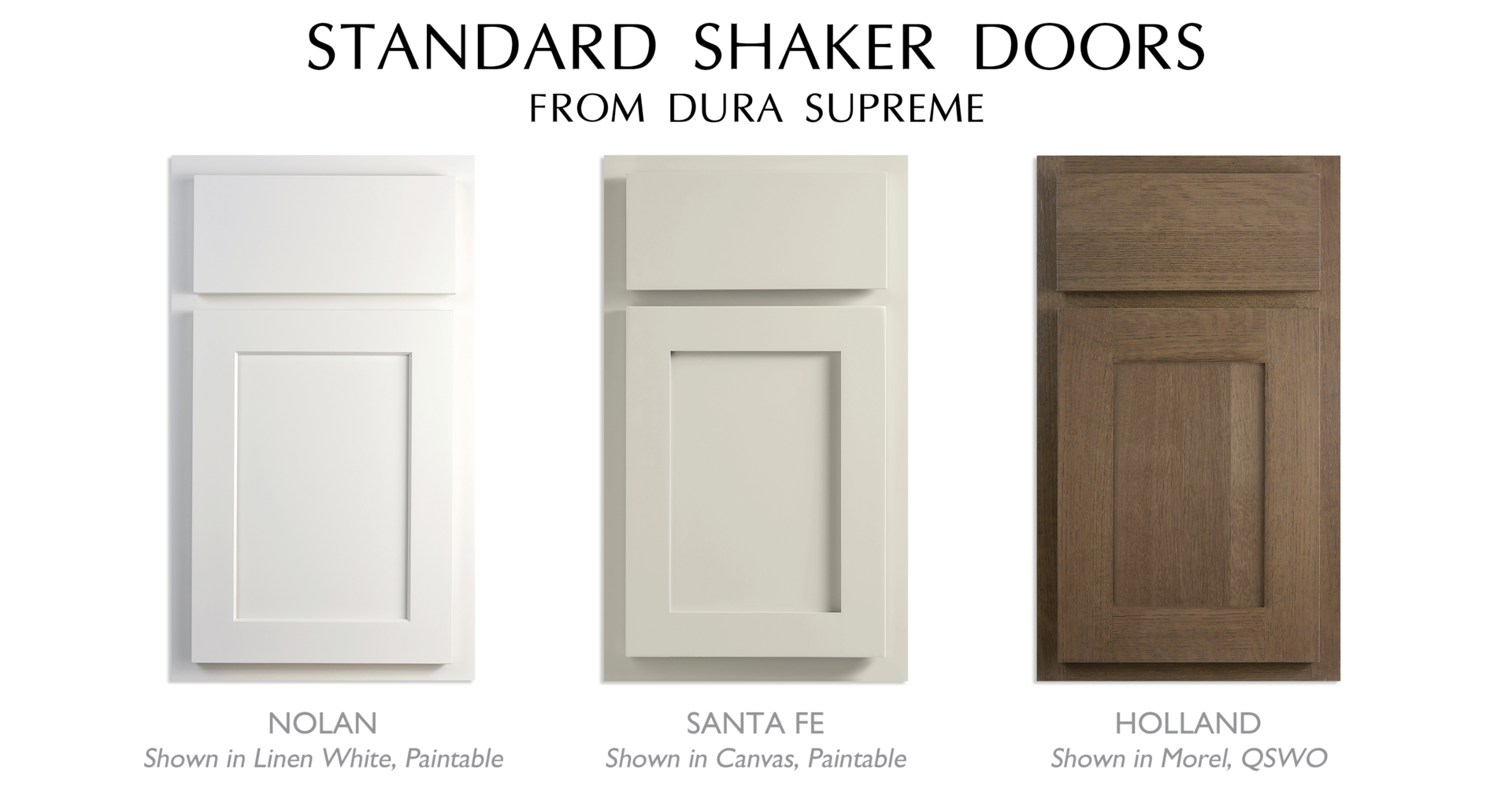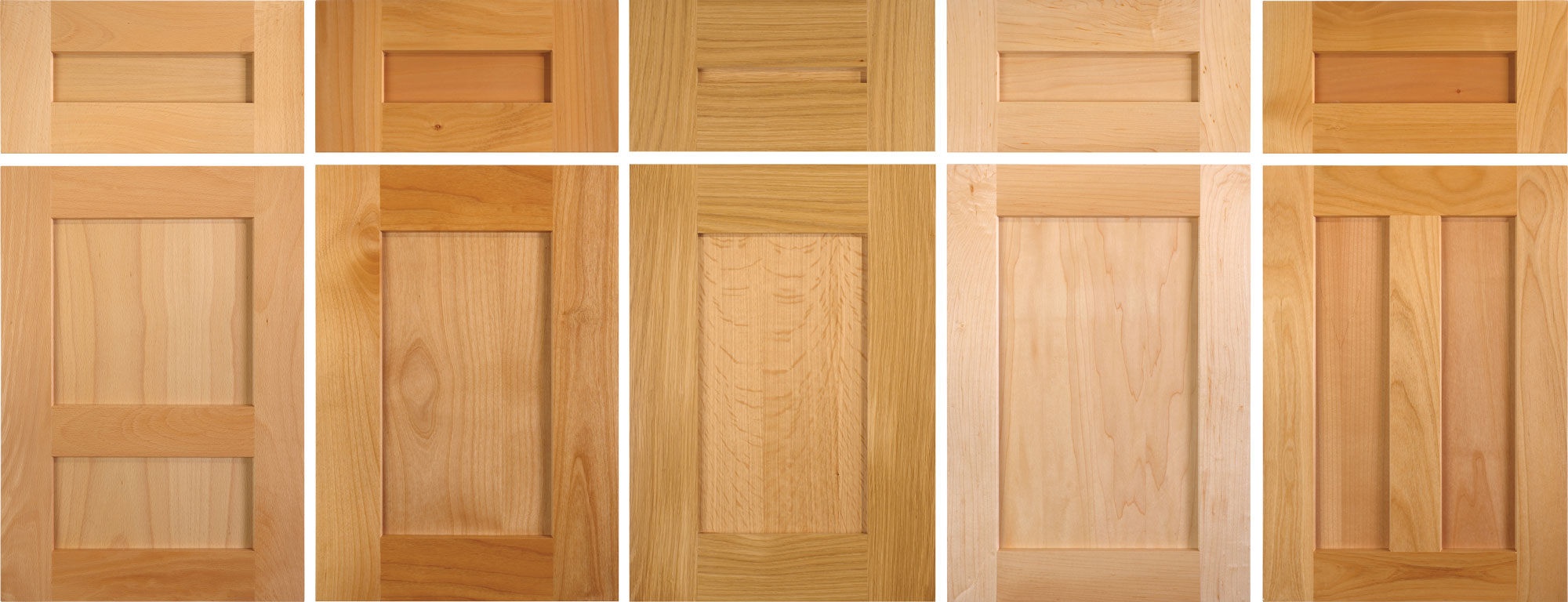Shaker Cabinet Door Styles and Designs

Shaker cabinet doors are renowned for their clean lines, simple elegance, and enduring appeal. Their enduring popularity stems from their adaptability to various design styles, from traditional to contemporary. This section will explore the defining characteristics of Shaker doors, compare different panel profiles, examine stylistic variations across time and regions, and present three unique design examples.
Defining Characteristics of Shaker Cabinet Doors
Shaker cabinet doors are characterized by their minimalist aesthetic. They typically feature a simple frame-and-panel construction, emphasizing clean lines and unadorned surfaces. The absence of excessive ornamentation is a key element, reflecting the Shaker belief in simplicity and functionality. The focus is on craftsmanship and the quality of the materials used. This straightforward design allows the natural beauty of the wood to take center stage. The most common features include a flat or slightly raised center panel within a simple rectangular frame.
Shaker Door Panel Profiles: A Comparison
Three primary panel profiles are commonly associated with Shaker cabinet doors: raised panel, flat panel, and recessed panel. Raised panel doors feature a center panel that projects slightly outward from the frame, creating a subtle three-dimensional effect. Flat panel doors have a flush center panel, resulting in a completely flat surface. Recessed panel doors, on the other hand, have a center panel that is set slightly inward from the frame, creating a recessed or inset appearance. The choice of panel profile significantly impacts the overall visual effect of the door, with raised panels offering a more traditional look and flat panels providing a contemporary feel. Recessed panels offer a unique, slightly more modern take on the classic Shaker style.
Variations in Shaker Door Styles Across Time and Regions
While the core principles of Shaker design remain consistent, subtle variations exist across different time periods and regions. Early Shaker doors often featured simpler construction techniques and less refined details. As the Shaker movement evolved, designs became slightly more intricate, incorporating variations in panel profiles and frame designs. Regional differences also influenced the styles, with some areas favoring specific wood types or construction methods. For instance, Shaker communities in different parts of New England might have utilized different types of locally available wood, resulting in variations in color and grain patterns. These regional variations, though subtle, add to the richness and diversity of Shaker cabinet door styles.
Three Unique Shaker Cabinet Door Designs
The following table details three distinct Shaker cabinet door designs, showcasing the versatility of this style:
| Style Name | Wood Type | Dimensions (W x H x D) | Hardware |
|---|---|---|---|
| Classic Raised Panel | Cherry | 12″ x 18″ x 1″ | Simple cup pulls, brushed nickel finish |
| Modern Flat Panel | White Oak | 15″ x 24″ x ¾” | Flush-mounted, minimalist bar pulls, oil-rubbed bronze finish |
| Rustic Recessed Panel | Reclaimed Pine | 18″ x 30″ x 1 ¼” | Antique-style knobs, black finish |
Building Shaker Cabinet Doors

Building Shaker-style cabinet doors offers a rewarding blend of craftsmanship and aesthetic appeal. The clean lines and simple elegance of Shaker design make these doors a popular choice for kitchens and other spaces. This section details the materials, techniques, and processes involved in creating raised-panel Shaker cabinet doors.
Wood Selection for Shaker Cabinet Doors
The choice of wood significantly impacts the final look and durability of your Shaker doors. Several species offer excellent properties for this application. Oak, known for its strength and grain patterns, provides a robust and visually appealing option. Maple, with its fine, even grain and hardness, offers a smooth, clean surface ideal for showcasing the Shaker style’s minimalist aesthetic. Cherry, prized for its rich color and ability to darken over time, adds a touch of warmth and elegance. The selection depends on personal preference and budget, considering factors such as cost, workability, and desired aesthetic.
Joinery Techniques for Shaker Doors
Strong and precise joinery is crucial for the structural integrity and longevity of Shaker cabinet doors. Mortise and tenon joints, a classic woodworking technique, offer exceptional strength and stability. This involves creating a precisely sized hole (mortise) in one piece of wood to receive a corresponding projection (tenon) on another. Dowel joints, while simpler to execute, also provide reliable fastening, especially when combined with glue. The choice of joinery method often depends on the skill level of the woodworker and the desired level of complexity. A well-executed mortise and tenon joint will provide superior strength, while dowel joints offer a more efficient approach for less experienced woodworkers.
Building a Raised-Panel Shaker Cabinet Door: A Step-by-Step Guide
- Cut the Door Frame: Accurately cut the four pieces of wood for the frame to the desired dimensions, ensuring perfectly square corners. Consider using a miter saw for precise cuts.
- Cut the Panel: Cut the raised panel slightly smaller than the inside dimensions of the frame to allow for a snug fit. The panel should be slightly smaller than the opening to accommodate expansion and contraction due to changes in humidity.
- Prepare the Joints: If using mortise and tenon joints, carefully cut the mortises and tenons to ensure a precise fit. For dowel joints, drill accurately positioned holes in the frame pieces and the panel.
- Assemble the Frame: Apply wood glue to the joints and carefully assemble the frame, ensuring squareness and proper alignment. Use clamps to hold the pieces firmly in place until the glue dries.
- Install the Panel: Apply glue to the edges of the panel and carefully insert it into the frame. Use clamps to ensure a tight and even fit.
- Clean Up Excess Glue: Remove any excess glue that might have squeezed out during assembly.
Achieving a Smooth Surface Finish
A smooth, even surface is essential for a professional-looking Shaker cabinet door. Proper sanding is key to achieving this.
- Begin with coarser grit sandpaper (e.g., 80-grit) to remove any major imperfections or glue residue.
- Gradually progress to finer grits (e.g., 120-grit, 180-grit, 220-grit), sanding in the direction of the wood grain to avoid scratches.
- Use a sanding block for consistent pressure and a smooth finish.
- After sanding, inspect the surface carefully for any remaining imperfections. Repeat the sanding process with finer grits as needed.
- Finally, consider using a hand plane for the most precise and smooth finish, followed by very fine sandpaper for the final touch.
Finishing and Installation of Shaker Cabinet Doors: Building Shaker Cabinet Doors

Completing Shaker cabinet doors involves meticulous finishing and precise installation to achieve a professional look and ensure long-lasting functionality. Proper preparation and technique are key to a successful outcome.
Surface Preparation
Thorough surface preparation is paramount before applying any finish. This involves several crucial steps. First, sand the cabinet doors using progressively finer grits of sandpaper, starting with a coarser grit to remove any imperfections and gradually moving to a finer grit for a smooth surface. This removes any raised grain, dust, and minor blemishes. After sanding, wipe the doors clean with a tack cloth to remove all dust particles. This ensures the finish adheres properly and prevents imperfections from showing through. Failing to properly prepare the surface can lead to an uneven finish, highlighting imperfections and potentially compromising the durability of the final product.
Finishing Techniques
Several finishing techniques enhance the beauty and durability of Shaker cabinet doors. Staining provides a natural wood look, enhancing the grain pattern. Apply stain evenly following the manufacturer’s instructions, using a brush or cloth. Allow sufficient drying time before applying a clear coat for protection. Painting offers versatility, allowing for a wide range of colors and finishes. Use a high-quality primer before painting to ensure even coverage and adhesion. Apply multiple thin coats, allowing each coat to dry completely before applying the next. Clear coating protects the wood and enhances its natural beauty. Apply multiple thin coats, allowing each coat to dry thoroughly between applications. Consider using a high-quality polyurethane or varnish for maximum protection and durability.
Installing Shaker Cabinet Doors, Building shaker cabinet doors
Installing Shaker cabinet doors requires careful measurement and precision. First, ensure the cabinet frame is properly aligned and level. Then, position the door in the frame and mark the hinge locations. Using a hinge template, drill pilot holes for the hinges. Attach the hinges to the door and cabinet frame using screws. The hinges should be perfectly aligned to ensure the door opens and closes smoothly. Adjust the hinges as needed for proper alignment and function. Finally, install the door handles or knobs, ensuring they are securely fastened and properly aligned. The process involves careful attention to detail to ensure a flawless result.
Installing Hinges and Handles
Imagine holding a cabinet door. On the inside edge of the door, you’ll mark the placement for the hinges according to the hinge template. Drill pilot holes slightly smaller than the hinge screws to prevent wood splitting. Carefully attach the hinge leaves to the door, ensuring they are flush and even. Next, locate the corresponding positions on the cabinet frame and repeat the process, securing the other half of the hinges. Once all hinges are attached, carefully align the door with the frame, checking for smooth opening and closing. Minor adjustments may be needed to fine-tune the hinge placement for perfect alignment. For handles, mark the desired location, drill pilot holes, and securely fasten them to the door. Ensure they are level and aligned with each other and the door’s surface. Test the functionality of the handles to ensure a secure and comfortable grip.
